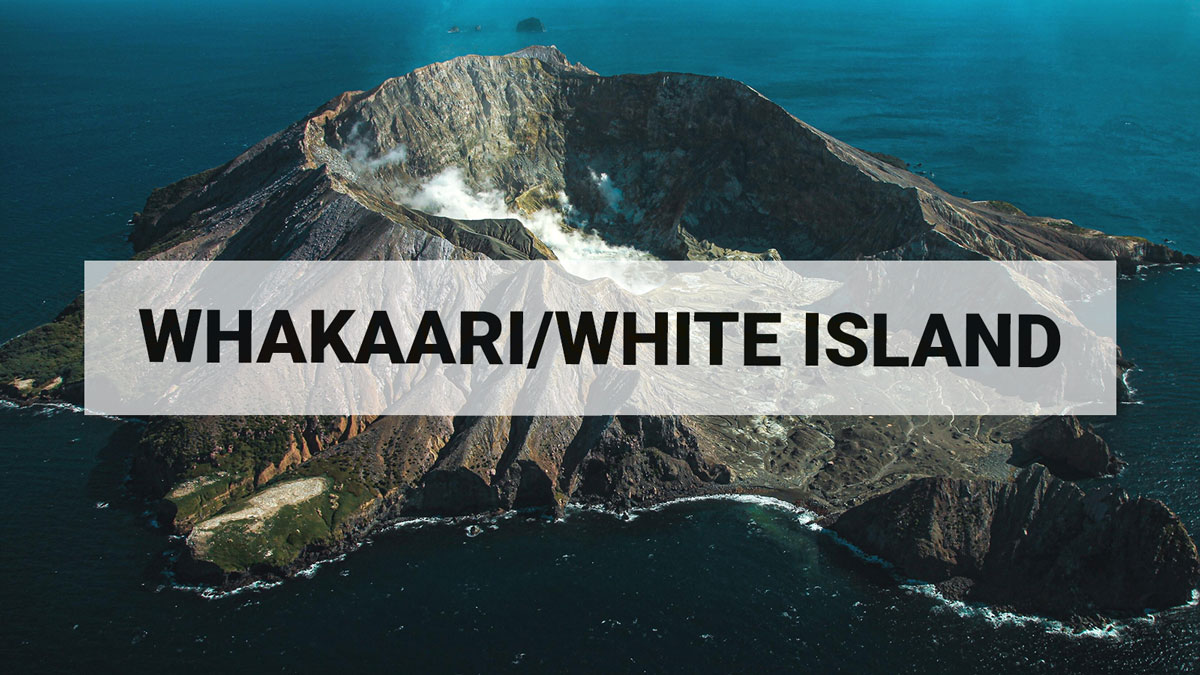
Increased heat flow confirms ongoing volcanic unrest at Whakaari/White Island
An observation and thermal infrared (IR) measurement flight has confirmed high temperatures are again present. These are from locations on the 2019 lava extrusions where high temperatures have been recorded before. These observations confirm the source of glow on the web cameras. There is no evidence of eruptive activity. The Volcanic Alert Level remains at 1.
Observation flights on Thursday 15 and Tuesday 20 July have confirmed that the 2019 Primary Crater remains flooded, with minor steam/gas driven activity occurring around that area. Emissions from the small steam vent formed in early June on the north side of the 2019 crater have also declined. Other steam and gas vents remain active and unchanged. There is no evidence of eruptive activity. Thermal IR measurements on 15 July ranged from 498 to 654°C for vents on the 2019 lava extrusions (domes) and show a dramatic rise from 110-111°C measured there in late May-June. The high temperatures are like those measured in early-mid 2020.
Volcano-seismic activity including volcanic tremor has generally remained at low levels during the past months but there have been exceptions. On 2 June there was a short-lived tremor episode. Discrete acoustic signals were recorded on 18 June, and then overnight on 19-20 June some sharp increases and decreases in acoustic signal occurred with related geysering in the new vent north of 2019 Crater. A 15-minute-long low frequency volcanic earthquake was recorded on 30 June. Night glow, reflecting higher vent temperatures, has been present since the 30 June earthquake.
For several months ground elevation change derived from the InSAR satellite data has consistently showed minor uplift of an area near the 2019 Primary Crater. However, in the past few weeks a mix of signals has indicated both subsidence and continued uplift. A gas flight yesterday (20 July) has confirmed that the amount of gas being released from the volcano has not changed significantly over the past few months. The volcano continues to produce a weak-to-moderate gas and steam plume, and this may continue to cause weak acid rain downwind of the island.
Recent observations and data confirm volcanic unrest continues, albeit with some variability. As the Main Crater fills with water and the 2019 Primary Crater became flooded, there have been changes. As expected, vent temperatures initially cooled and then gas was being pushed sideways around the lava domes and changes in ground level were measured. Now, high temperature gas from magma at shallow depth is again reaching the surface through vents in the 2019 lava extrusions. The exact mechanism driving these changes is uncertain, but magma is involved either through its subsurface movement, or by new release of gases from a stationary body of magma.
Overall, the level of activity remains minor, and our recent observations and measurements are consistent with ongoing volcanic unrest. The Volcanic Alert Level for Whakaari/White Island remains at 1 and the Aviation Colour Code remains at Green.
The Volcanic Alert Level reflects the current level of volcanic unrest or activity and is not a forecast of future activity. While Volcanic Alert Level 1 is mostly associated with environmental hazards (including discharge of steam and hot volcanic gases, earthquakes, landslides and hydrothermal activity) eruptions can still occur with little or no warning.
Further information about the volcanic alert levels and what they mean can be found at https://www.geonet.org.nz/about/volcano/val
GNS Science and the National Geohazards Monitoring Centre continue to monitor Whakaari for further changes in unrest. GeoNet monitors Whakaari via a network of seismic and acoustic sensors, GNSS (GPS) receivers, cameras, and gas and visual observations. Due to equipment issues, some of our seismic and acoustic data are intermittent and we continue to experience gaps in web camera images.
Michael Rosenberg
Duty Volcanologist
Media Contact: 021 574 541 or media@gns.cri.n